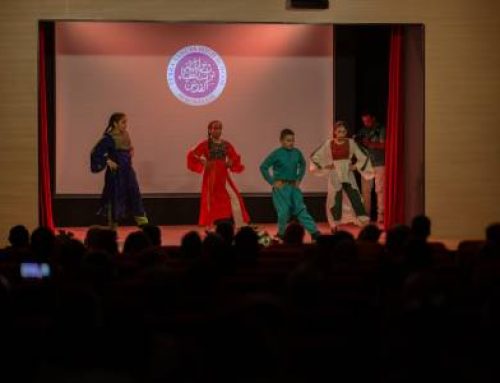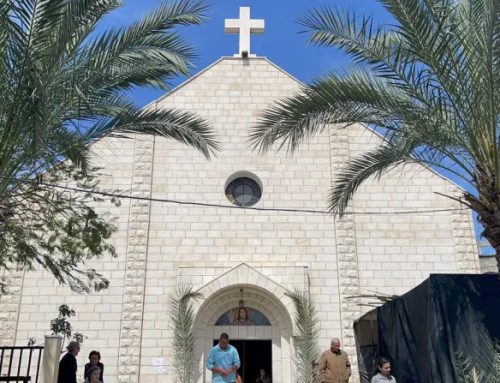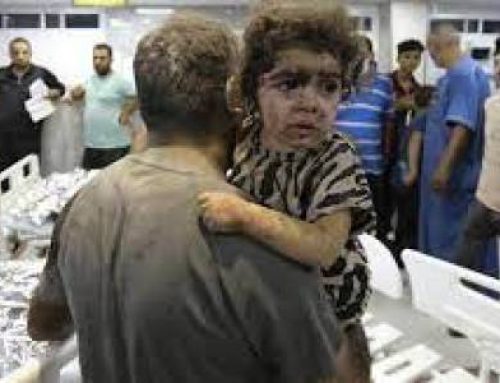Steeples of all denominations rise from the ground in Bethany, Jordan, on the east bank of the river where Christ is said to have been baptized.
The child’s eyes, staring above the baptistry, open wide in surprise as the droplets of cold water trickle down onto his forehead. In this late morning marked by the stifling summer heat, little Omar does not cry. His mother, on the other hand, seems on the brink of shedding a tear which, however, is dried up, just as it’s about to run down, by the burning, stifling wind from the desert that extends as far as the eye can see.
On the east bank of the Jordan, in the Hashemite Kingdom, the baptism of the seven-month-old infant takes on a particularly symbolic dimension today. It is happening in Bethany, where Christ himself is reported to have received this first sacrament from St. John the Baptist 2,000 years ago. The authenticity of the site has never really been officially recognized, but the Jordanians defend it tooth and nail.
Since the late 1990s, “we have been conducting archaeological excavations there based on the indications given in the Gospel of St. John (John 1, 24-28) and the descriptions of pilgrims dating back to the fourth and 12th centuries,” Rustom Mkhjan, deputy director of the site’s administration, explains enthusiastically.
This voluble man does not stay in one place. He points to the Greek names of the Biblical cities around the site, inscribed on a huge mosaic of the map of Madaba, to support his conviction: “Bethany is really the place where Christ was baptized.”
Over the past two decades, research has unearthed nine foundations of churches and chapels, baptismal pools, hydraulic basins and a broad range of other vestiges and artefacts pointing to the fact that the region was a shrine for Christian pilgrims during Antiquity.
However, its historic veracity has never been officially proved: a few kilometers away, on the other side of the river, Israel deploys a largely similar set of arguments to justify the holding of the emblematic Biblical episode on the western bank of the river.
Skirting the controversy in 2015, UNESCO justified the selection of the Jordanian holy site as part of the global patrimony of Humanity not because of the baptism of Christ but because of the waves of pilgrims who have poured into it for over a millennium and a half. After John-Paul II’s visit in 2000 and that of Benedict XVI in 2009, the visit by Pope Francis to Bethany in 2014 also helped to focus the spotlight in Jordan on this little town at the source of Christianity.
The memory of his presence still permeates the site, as is evidenced by another mosaic depicting, at the turn of a path, the current pontiff and King Abdullah II of Jordan side by side on the banks of the sacred water.
“That was a very symbolic moment and an honor for all minority Catholics in the country,” recalls Father Rif’at Bader, director of the Catholic Centre for Studies and Media in Jordan — attached to the Latin Patriarchy of Jerusalem — and parish priest of Naour, about 20 kilometers southwest of Amman.
Shimmering in the heat
Christians of all denominations represent only 4 percent of the kingdom’s population, which is overwhelmingly Sunni, but that is hard to imagine as you walk around this part of Wadi Al-Kharrar, “melodious valley” in Arabic, a vast desert no-man’s land where all one sees on the horizon, shimmering in the heat, are dozens of crosses, domes and steeples.
This stretch of land continues to develop ceaselessly under the impulse of Christian communities of all confessions. “Today there are five big churches on this bank of the Jordan, mostly Orthodox; 300,000 to 400,000 persons come here each year,” explains the guide, Khaled Samawi, pointing to the many buildings around.
For many years now, Syriac, Russian Orthodox, Armenian and Lutheran buildings have sprung up out of the ground, aiming to attract the faithful in their communities onto the path of the baptism of Jesus.
Passing in front of a big project launched about 10 years ago by the Latin Patriarch of Jerusalem, Rémy cannot hold back a cry of surprise. Last year this Catholic, a Frenchman in his thirties, spent many months in Jordan as a volunteer in the local church. He had the opportunity then to visit Bethany. At the time, the Catholic church was far from completed.
“It has since developed at a maddening speed,” he observes enthusiastically.
“With a capacity of 2,000 persons, it should become one of the biggest churches in the Middle East,” says Father Bader. Elsewhere in the kingdom, others wish to follow suit.
“We, too, are looking for funds to build a Maronite church on the banks of the river,” admits Msgr. Ghazi El Khoury, episcopal vicar of the kingdom and bishop of Saint-Charbel of Amman parish. The Ethiopians and Anglicans are also planning to build theirs.
Does this multiplication of steeples, so concentrated, maintain a climate of competition, of one-upmanship between the different communities?
“Some 20 years ago, the issue of having one place of worship for all Christians was raised,” recalls Msgr. El Khoury. However, this idea of a great common memorial, a brainchild of Franciscan archeologist Michele Piccirillo, was a complex one to implement and petered out with time. “We preferred to allow everyone to have their denominational place, while discovering those of the other denominations.”
King Abdullah II then offered the Christians land so that each community could build its place of worship, a sign of the Hashemite monarchy’s great goodwill towards its Christian minorities — and of its will to develop religious tourism in the valley. The idea has been a success and a very strong symbol of peace.
Thirty years ago, the challenge was, however, far from met. At the dawn of the 1990s, the soil of these orange sandstone hills was still filled with explosives left behind by decades of border conflict between Israel and Jordan.
“There had been thousands of anti-personnel mines,” recalls Rustom Mkhjan, “at the very place where we have been able to bring in thousands of pilgrims …”.
Malo Tresca
Source: la-croix.com






